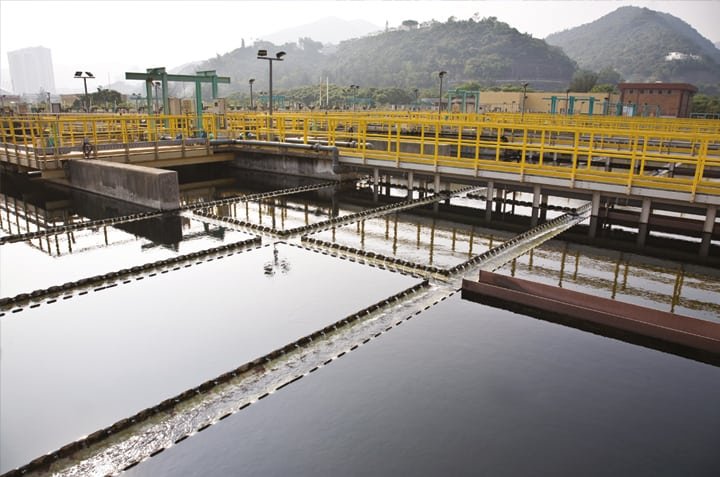What Is Sedimentation In Wastewater Treatment

What Is Sedimentation in Wastewater Treatment?
Introduction
Wastewater treatment is a critical component of modern urban and industrial infrastructure, ensuring that the water we release back into the environment is clean and free from harmful pollutants. Sedimentation is one of the oldest and most fundamental processes in the field of wastewater treatment. It serves as a primary mechanism to remove suspended solids from water. This article explores the concept of sedimentation, its importance in wastewater treatment, how it works, its different types, factors affecting its efficiency, and recent advancements in sedimentation technology.
The Basics of Sedimentation
Sedimentation is a physical water treatment process using gravity to remove suspended solids from water. The principle behind sedimentation is based on the natural tendency of particles with higher density than the fluid in which they are suspended to settle by gravity. Sedimentation is used not only in wastewater treatment but also in drinking water purification.
Historical Context
The use of sedimentation dates back to ancient civilizations where natural settling ponds were used to clarify water. The modern engineering of sedimentation practices, however, began with the industrial revolution, as urbanization led to increased wastewater production and the necessity for systematic treatment processes.
Importance of Sedimentation in Wastewater Treatment
Sedimentation plays a pivotal role in wastewater treatment for several reasons:
-
- Reduction of Suspended Solids: It effectively removes the bulk of suspended solids, which can account for up to 65% of the total solids in wastewater.
-
- Preparation for Further Treatment: By removing solids, sedimentation makes subsequent treatments such as biological treatment more effective by reducing the load on these processes.
-
- Prevention of System Overloading: Efficient sedimentation prevents overloading of downstream processes, thus extending the lifespan and reducing the operational costs of treatment plants.
-
- Protection of the Environment: Proper sedimentation reduces environmental pollution by ensuring that solids are not discharged into rivers, lakes, or seas.
The Process of Sedimentation
Sedimentation is typically employed in the initial stages of wastewater treatment, often after screens and grit chambers remove large debris and sand. The process involves several key stages:
-
- Collection: Wastewater enters a sedimentation basin or clarifier, where flow velocity decreases, allowing suspended particles to settle.
-
- Settling: As water remains in the basin, gravity pulls heavier particles to the bottom, forming a layer of sludge.
-
- Sludge Removal: The collected sludge is periodically or continuously removed from the bottom of the tank for further processing, which may involve dewatering and biological treatment.
-
- Effluent Discharge: The clarified water at the top is skimmed off and either subjected to further treatment or discharged if it meets environmental standards.
Types of Sedimentation
There are several types of sedimentation processes used in wastewater treatment, each suited to different situations:
-
- Discrete Sedimentation: Involves the settling of particles that do not flocculate or change in size as they settle. This process typically applies to large particles like sand and grit.
-
- Flocculant Sedimentation: Particles aggregate to form larger, heavier flocs. This type is common when dealing with biologically or chemically treated water where coagulation and flocculation precede sedimentation.
-
- Hindered or Zone Sedimentation: Occurs when particles are present in high concentrations, creating a zone where settling is impeded by the presence of other particles. The particulate mass moves as a unit.
-
- Compression Sedimentation: Takes place when solids concentration is so high that particulate matter at the bottom of the settling zone compacts into a dense layer, pushing water out of the interstices.
Factors Affecting Sedimentation Efficiency
Several factors impact the effectiveness of sedimentation in treating wastewater:
-
- Particle Size and Density: Larger and denser particles settle faster. Fine particles may require coagulation or flocculation to size them up for sedimentation.
-
- Flow Rates: Higher flow rates can reduce sedimentation efficiency by keeping particles suspended and reducing the time allowed for settling.
-
- Temperature: Temperature affects water viscosity and density, with warmer temperatures generally enhancing settling velocity.
-
- Turbulence: Excessive turbulence can re-suspend settled particles, undermining the process.
-
- Tank Design: Factors such as tank shape, depth, and inlet/outlet design influence sedimentation. Proper design ensures uniform flow and minimizes short-circuiting.
-
- Chemical Additives: The use of coagulants and flocculants can enhance sedimentation by aggregating smaller particles into larger settling masses.
Advances in Sedimentation Technology
While traditional sedimentation relies on gravity, modern advancements have improved its efficiency and adaptability, including:
-
- Lamella Clarifiers: Use inclined plates to increase surface area for settling, enabling compact designs and improved efficiency.
-
- High-Rate Settling Tanks: Use mechanical means or chemical additives to enhance settlement speeds and reduce tank size.
-
- Ballasted Sedimentation: Involves adding micro-sand to increase the weight and size of flocs, allowing faster settling and shorter hydraulic retention times.
-
- Automation and Monitoring: Advanced sensors and control systems allow real-time monitoring and optimization of sedimentation processes, improving efficiency and response times to changing conditions.
-
- Hybrid Systems: Combination of physical, chemical, and biological processes in a single system to enhance overall treatment efficiency.
Environmental and Economic Considerations
Implementing sedimentation in wastewater treatment offers numerous environmental and economic benefits. Environmentally, it maintains ecosystem balance by preventing the discharge of organic and inorganic solids into water bodies. Economically, it reduces the need for potentially expensive downstream treatment processes by removing a significant portion of pollutants early in the treatment train. Effective sludge management and the potential conversion of biosolids into energy or fertilizer further contribute to sustainability and economic viability.
Challenges and Future Directions
Despite its advantages, sedimentation faces challenges such as handling increasing volumes of wastewater, dealing with variable types of pollutants, and complying with stricter environmental regulations. Ongoing research focuses on improving sedimentation technology through innovations like:
-
- Nanotechnology and Materials Science: Developing new materials that can enhance particle aggregation and settling.
-
- Data Analytics and Machine Learning: Utilizing data-driven approaches for predictive maintenance and process optimization.
-
- Integration with Circular Economy Models: Exploring ways to recover and reuse materials from sludge, contributing to sustainable wastewater management.
Conclusion
Sedimentation remains a cornerstone of wastewater treatment, providing a reliable, efficient, and cost-effective method to reduce suspended solids. As technology progresses, its integration with advanced processes and materials science holds the promise of even greater efficacy and sustainability in the future. By understanding and optimizing sedimentation, we can continue to protect our water resources and promote environmental stewardship.


